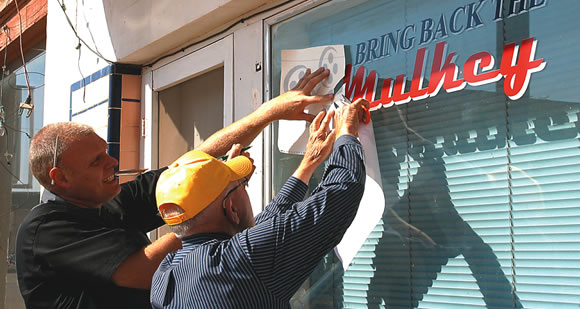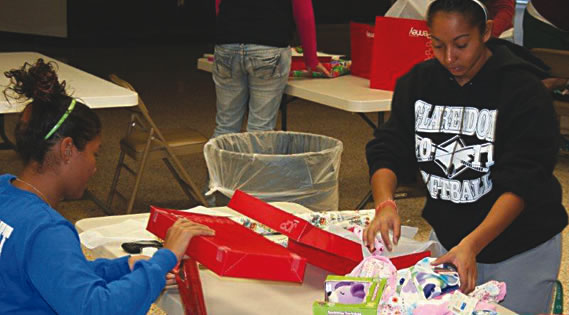Cuts in state financing are having a big impact on the Clarendon Public Schools and Clarendon College, but officials at both institutions say they are trying to make the best of a difficult situation.
CC President Phil Shirley and Clarendon School Superintendent Monty Hysinger addressed the Donley County Retired School Personnel Monday night, and both men said they are trying to do more with less.
“We have learned that in a financial crisis, the Legislature can and will cut public education,” Hysinger said. “It’s going to take teachers and the public to make a change.”
Public School Impact
Hysinger said the 82nd Texas Legislature last spring was historic in that it was the first time in 60 years the state failed to finance schools under existing law and that public school financing was cut by a total of $5.4 billion.
In the 2011-2012 fiscal year, Clarendon ISD cut $468,748 from its budget, and it will have to cut another $120,757 in 2012-2013.
“We can weather the storm for a year,” Hysinger said, “but beyond that we will have to make major changes.”
The school has few options to raise money on its own. The local tax rate is capped at the current $1.04 per $100 valuation, but the district could ask local voters to raise that up to $1.17. Doing so would raise $180,000 locally and trigger additional state funding of at least $150,000.
The district may also have to reinstate its tax on personal property, which could generate $250,000.
“We may reach a point in a year or two where we have to look at that.”
In the meantime, the school has taken several proactive steps to close its budget shortfall, including eliminating six positions through attrition. One those positions, the pre-kindergarten teacher, was saved by charging tuition for that unrequired class. The school has also stopped planned purchases of a new vehicle and a new bus, reduced travel expenses, extended the date that it planned to replace student laptop computers, and found other savings.
Clarendon ISD has also joined the Equity Center in one of four lawsuits against the state regarding the disparity in school funding.
At the same time funding is being reduced, Texas is growing by more than 80,000 students per year, Hysinger said. But in Clarendon, enrollment is falling from 511 last year to 499 this year. This also hurts financially since state funding is based on student numbers.
While facing funding issues, public schools also have another challenge. The state has adopted the new STAAR accountability testing for students which puts more pressure on schools and increases the number of standardized testing dates from 25 to about 45.
College Impact
At the community college level, President Phil Shirley said CC suffered a $300,000 cut when all was said and done and the next round of cuts may be that much or a little more.
“It’s going to be tough, but we will persevere,” Shirley said.
The college has three main ways to raise more money. Raising property taxes from the current 22¢ per $100 valuation would bring in only $30,000 without triggering a rollback election. Increasing tuition and fees is not a good option because the college has gone to high in that area already. Grants are a possibility, but in the current economy, foundations aren’t giving out money like they used to.
“We’ve got to be smarter and more efficient, and we’ve got to operate cheaper but operate well with excellence in mind,” Shirley said.
The cuts in state funding also come as the college tries to find ways to deal with aging dormitories that need renovating and at a time when the college is seeking to improve its other facilities. Shirley said the Livestock & Equine Center needs bathrooms and a concession area, and there is a need for a field house, bathrooms, and a concession area to compliment the baseball and softball fields.
Forming new partnerships and finding ways to serve more students will also help the college as it moves forward.
Both the college and the public school welcome interested citizens to visit their facilities. Shirley and Hysinger say they are trying to be good stewards of the money they are entrusted with and doing their best to weather the financial storms of the current economy.





Reader Comments